Variety’s Showrunners Sitdown: ‘Shogun’ Creators Justin Marks and Rachel Kondo on Killing Fan-Favorite Characters, ‘Translation as Couples Therapy’ — and What’s to Come in a Potential Season 2
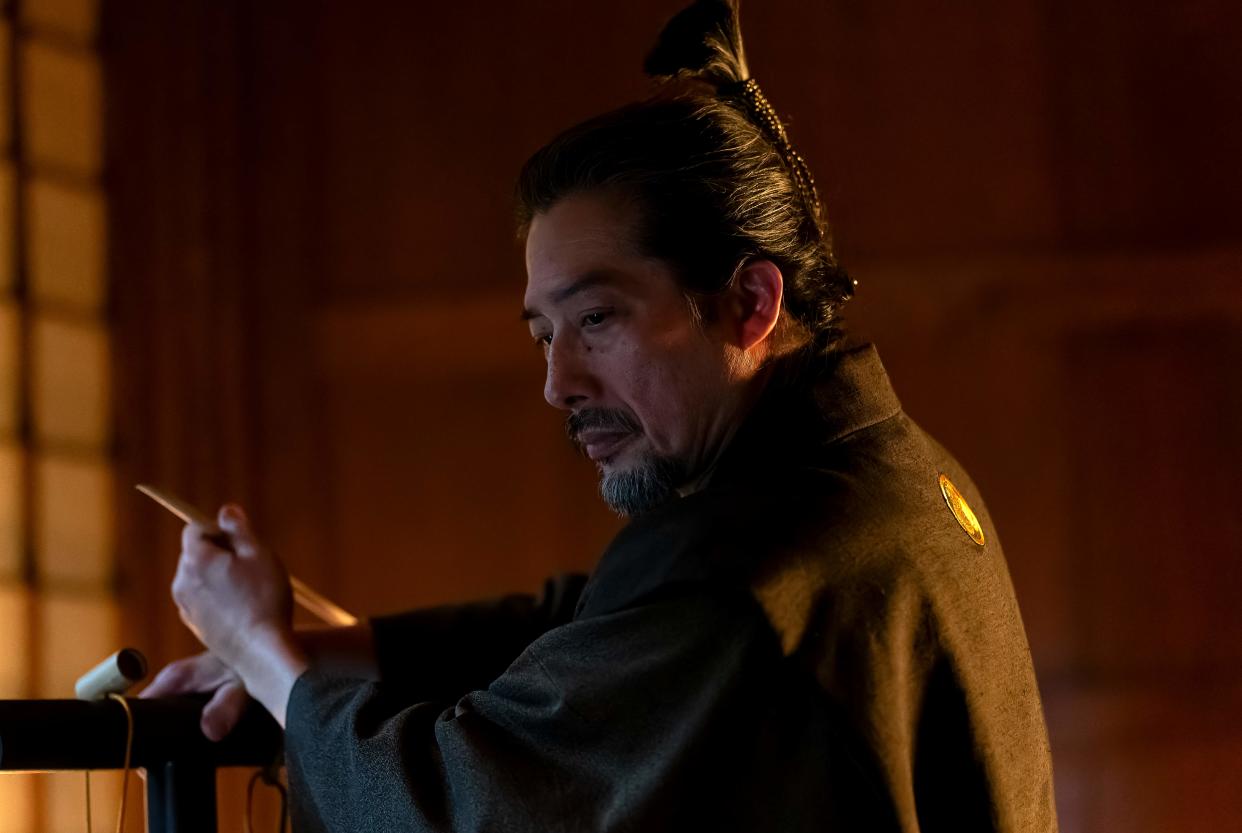
On the day we taped this “Shōgun” interview, with series creators Justin Marks and Rachel Kondo, the news broke that the FX show, previously billed as a limited series, might continue for more seasons after all. Since then, FX has officially announced that Marks and Kondo — along with the estate of author James Clavell, whose blockbuster 1975 novel provided the source material for what we can now call Season 1 of “Shōgun” — are developing a potential plan to go past the story of the book, and tell the further tales of Lord Yoshii Toranaga (Hiroyuki Sanada).
After the hard-won triumph that is “Shōgun,” the decision makes sense. And though there isn’t more of Clavell’s writing on which to base new material, Toranaga is modeled after the historical figure Tokugawa Ieyas, the Japanese warlord who stabilized Japan, beginning in 1600 when “Shōgun” is set.
More from Variety
This is all to say that it was a good day to speak with Marks and Kondo for the launch of Variety’s Showrunners Sitdown With Kate Aurthur presented by FX. With many spoilers ahead — be warned! — we went deep on “Shōgun,” discussing its origins, the show’s remarkable cast, what lines were the actors’ improvisations (“I am a dog!”) and the season’s final two episodes that drive the story to its conclusion.
Or to what we thought would be its conclusion. We also talked about what more “Shōgun” might look like, if what they come up with rises to the bar of excellence set by Season 1.
So Justin, I believe you were sent the James Clavell novel “Shōgun” in the year 2018. If you can remember back that far — what happened next?
Justin Marks: Yeah, it was 2018 when FX sent the book over. I had not read the book — it was a cover I recognized from everyone’s parents’ nightstand. Once we opened the book and started to read it, it’s really this wonderful, modern, surprising, intersectional story about how we encounter other cultures, and so yeah, it became very exciting at that point.
Rachel, what was your experience of that?
Rachel Kondo: Well if Justin was, I would say, rightfully conflicted, I was probably problematically unconflicted about receiving the book and thinking, “This is great, this is a chance to speak to something that is very important to me, which is my Japanese heritage, and I’m the perfect person, and this is great! And Justin can come along for the ride.”
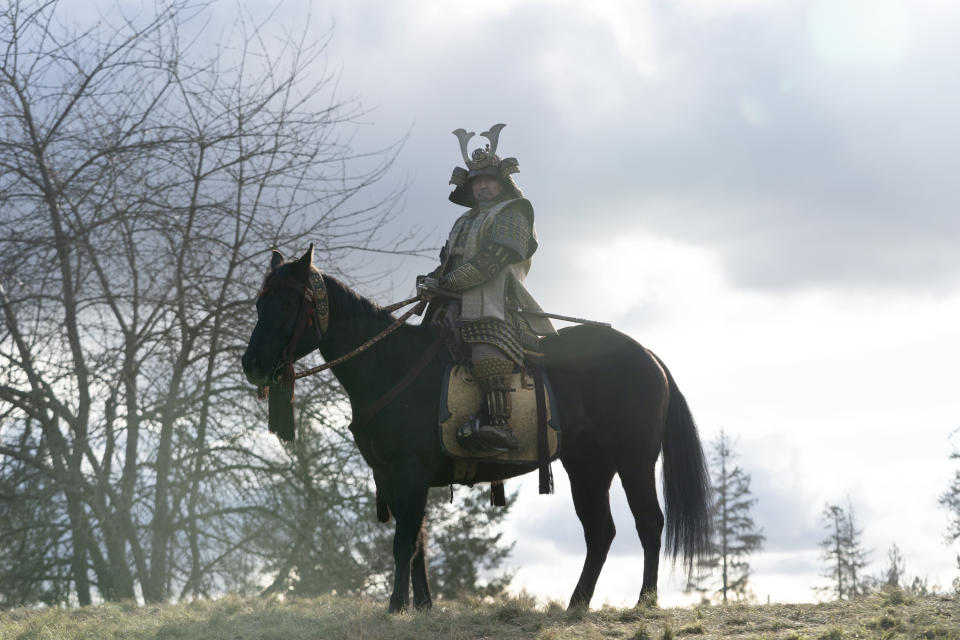
When you take on a project that’s as massive in scope as this one is, what are the first things you do?
Kondo: You breathe deeply.
Marks: You do it slowly. Honestly, I think that we knew working with FX that this was never going to be a show that would be made until it was ready to be made.
I think it began to feel terrifying — for me, at least — the first time I walked onto our empty stages in Vancouver and saw the scale of what we had been given to build. Jonathan Van Tulleken, our first block director, warned me before I came around the corner. He’s like, “I just want you to know, you’re going to be a little weak-kneed when you walk in there.” And there was its own atmosphere in that stage, it was so big.
The 1980 miniseries, which was massive — monoculture in a way I don’t think we really experience anymore — was told entirely from Blackthorne’s point of view, played by Richard Chamberlain. Did you revisit that “Shōgun” at all, and was it a lesson in what you didn’t want to do?
Kondo: Neither of us were familiar with the property, in that we hadn’t read the book — but we all live in the aftermath of its impact. We had just missed it, generationally speaking. So it wasn’t inspirational as much as it was just looming large.
Marks: We don’t have a lot of what the miniseries had going for it in adapting it today in that there was a novelty to it, no one had really done anything like that. We knew that if we were going to explore it, that we couldn’t be engaging on questions of culture in the way that that miniseries did. We had to kind of go a level deeper into the psychology of this world, into what it might have to say today. It wasn’t something that we revisited in the interest of making a reaction to. It was just something that it was an interesting academic exercise.
And what were you telling FX that you needed support-wise, in terms of research?
Marks: Yeah, we took it slowly. We had the luxury of the pandemic going for us at a certain point that it gave us. We came out of the writers’ room about three weeks before lockdown, and so we had all of our scripts — but we also had a lot of time to navel gaze. And we began to enlist Japanese consulting producers, collaborators, people who would eventually also become collaborators as we shot the show to read the scripts, begin to talk about cultural concerns, details. What are some of the common mistakes that Hollywood films have done? We have a bigger obligation today to go deeper and to employ a team that is able to read in Japanese and bring us that information, and so that was what we began to do then.
When you ended the writers’ room, was that when the translating began? Describe that process, please.
Marks: Couples therapy! There’s no point in translating the dialogue until it’s actually ready to be spoken, so we would lock the scripts a lot earlier for production than they would ordinarily be locked, no sooner than six weeks out. About 25 weeks out, we began to start the translation process, which involved sending the scripts to a team of translators in Tokyo. But that then needed to be polished, it needed to be performable, and it needed to be performable in Jidaigeki Japanese, which is sort of like an Elizabethan prose.
So for that, we hired a playwright, Kyoko Moriwaki, to adjust, polish every line to suit how it might be performed.
Kondo: Then we had the actors also take a look, and naturally they performed their version and they added their flair. And we thought, “Great, we’re all done. We’re set.”
Marks: When we got into post and when we began to look at the dialogue, that was when we really started to see, speaking with Aika Miyake, one of our editors, speaking with Masami, an assistant editor, you start to really see how the dialogue that had been performed by the Japanese actors deviates in very subtle ways. The sentence inversion that happens in Japanese, and when you’re putting in the subtitles, it suddenly began to feel like there was this distance between the performance and the words that were being spoken.
And so what we began to do was have all of that dialogue — like a giant game of telephone, translated back to us — and written out not as it was scripted, but as they were actually saying it. Most of the time, it was exactly what was scripted, but there were these moments where it deviated and then we would have to make that choice as to which one we used, or to kind of give it an extra polish, which really turned into many, many weeks of couples’ disputes.
Kondo: I thought it was years, but it was just weeks — maybe months. The best example that we have is in Episode 1 at the end when Toranaga asks Lady Mariko, “Will your Christian faith put you in conflict when it comes to your service to me?” And she says, “If I were just Christian, then yes it would, but I am more than one thing.” And that was what we had initially wrote, and we felt really great about that for a long time. And then through this long game of telephone, it’s translated back to us from the Japanese, and the spoken Japanese as, “If I were just Christian, yes, but I have more than one heart.” And to us, that felt so much more poetic. It was just one of those moments where we felt it was so far beyond what we could have ever done on our own and it was the perfect thing to run with.

I wanted to ask you about casting your three leads. Was it clear to you from the start that you wanted Hiroyuki Sanada to play Toranaga?
Kondo: For us, at least, he was always the guy, and we never deviated from that. Cosmo Jarvis who played Blackthorne is an entirely different story, because we had to find him very much like we had to find Anna Sawai. I don’t know how Justin did it, but she’s a unicorn. We needed somebody who could not only be fluent in Japanese and English, she had to have a fluency with both cultures and be able to flow between the two in this way. So she not only has to be bilingual, bicultural, and be a performer, she has to be an athlete, too. It was very, very physically rigorous.
Marks: Yeah, I don’t think we had a show until we had a Mariko. We really didn’t. Because until you can find that actress who can thread that needle, honestly, you don’t really have the key magic trick of this show, which is someone who navigates two cultures at the same time.
Tadanobu Asano became a huge fan favorite as Yabushige. He’s obviously a very well-known actor and movie star in Japan. But what did he bring to the role that you were seeing as you started watching it that was just —
Kondo: Do you see him champing at the bit? He’s getting ready —
Marks: Part of the reason why it’s exciting to talk about actors like Tadanobu Asano in this show is because it speaks to exactly why we needed to do this show in Japanese. Because you have an actor like him who is such a dynamic force. I find him to be this generational actor who we as an American audience don’t really associate as a generational actor, and it’s because he’s never been given an opportunity to perform in his own language.
Every single scene he pulled sideways in one way or another. Every scene, it was like, what’s going to show up today? What moment is he going to find a nuance, a twist, something of an improvisation?
One of my favorite moments is Episode 2. We had written the scene: I think all he was supposed to do was pat Blackthorne on the shoulder, and teach him how to say thank you, because Blackthorne had said it, but not too well. And instead of saying thank you, he asked, “Would you mind if I try a different line?” And he just started to get Blackthorne instead to say, “I am a dog. I am a dog. And say it for me. I am a dog.” And Cosmo, completely game to play along with this, turns into one of these magical moments that doesn’t get lost in translation.
That was improv? Oh my God.
Marks: It was entirely improvised.
Kondo: And when asked now, if you ask Cosmo now, his favorite line in the entire series: “I am a dog.”
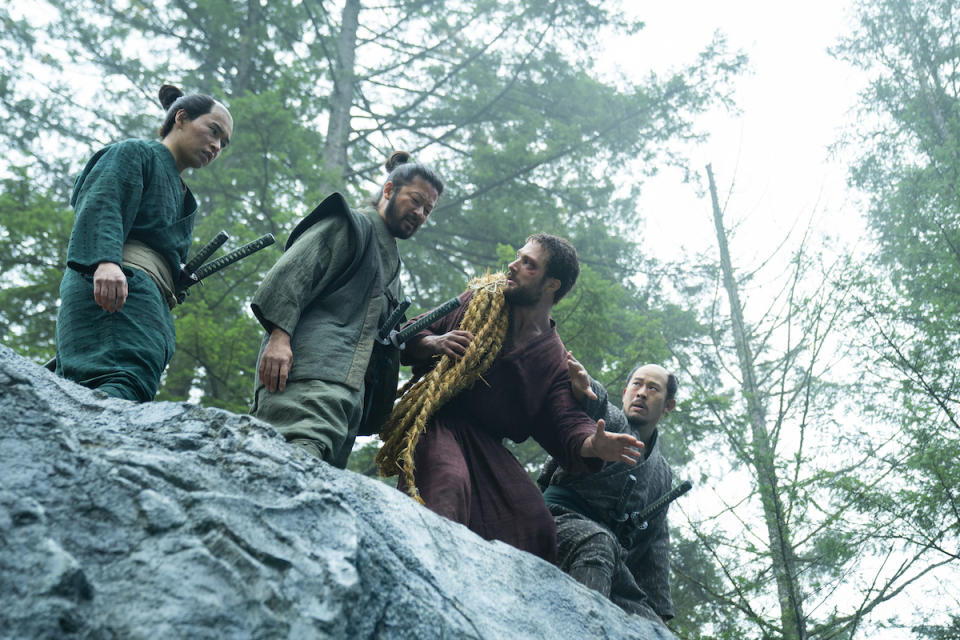
How do you write a show as huge as “Shōgun” is?
Marks: My background is architecture, and there’s this famous line of everyone talks about small-scale architecture or big-scale architecture. And this architect comes along and says, “No, there’s only one scale. It’s the human scale, and everything has to be about that.” And I think it’s the same when it comes to story, especially in television, where you are forced to pool your resources, understand what you have, and make decisions far earlier than we have to do when we’re making movies.
“Shōgun” obviously requires a lot of work on the viewer’s part. What were your strategies in terms of telling the story in an accessible way without dumbing things down?
Kondo: I think it’s an important question — the idea of making feudal Japan accessible. And I think what we brought to the table was just modern ignorance, right? We didn’t know ourselves. And so I think our journey to making it clear for us is generally what I think would make it accessible to others.
Marks: We wanted to be very careful. You have to be aware, especially in the first episode, you have to teach your audience how to watch your show. And so take your story slowly. Don’t jump right into Japanese politics on the deepest level in the first episode. Take it in just an inch at a time, like meet Toranaga in this room, understand by the body language the danger that’s being presented.
And, as much as possible in that first episode, give characters like Rodrigues, characters who offer humor in the English language so that you’re not just throwing everything at the audience right away, you’re bringing them slowly into the world. And then by Episode 10, even our English-speaking characters are speaking in Japanese.
There are some important cultural concepts that you have to introduce right away, especially the feudal Japanese relationship to death, with seppuku.
Kondo: Where do we even start? I am thinking back to the room in which we all came together, I think with a very healthy sense of worry when it came to Japanese rituals such as seppuku as it spoke to their relationship to death. This is something that’s completely new to us. And to be honest, I don’t even know if it’s something we can ever understand.
When it came to Blackthorne’s encounter with seppuku in Episode 10, in the book, that’s much earlier. And so we had to table it in the room, and say, “We’re not ready for this. We know we don’t understand.”
Marks: Yeah, look, it’s a charged concept. It’s also a concept that has been, frankly, fetishized by Hollywood cinema for a very long time. We wanted to be so deeply respectful of it, and slowly build to it so that by the time Blackthorne is doing what could be seen as an act of appropriation in Episode 10, it really is borne from a place of honesty in his heart. That he’s not trying to recreate the actual act that would be performed by the Japanese, he’s simply trying to affect the emotion behind it and to show that he understands it.
Seppuku is not about the — it’s not an expression of death, it’s an expression of life. It’s an understanding that life is such a precious and important thing, and that to stand for something, to stand for conviction, is something that one should take incredibly seriously.

Can you talk about how the show brings the female characters forward?
Kondo: We had to restrain ourselves when it came to how they were in the book.
Oh really?
Kondo: There’s a lot of Fuji in there, and she very quickly became one of our absolute favorite characters.
She’s the best.
Kondo: And so fun to write, let alone watch Moeka Hoshi perform. I mean, it’s astonishing.
Can you talk about the show’s approach to sex?
Marks: One of the most interesting things to us when it came to the research about the courtesan culture was this idea of consent. That it had to be something that the courtesan consented to as a business transaction. Which again — is this idea that comes back to us in this show over and over — that Kiku, from the very first episode, is very willingly there, she’s not a victim in that scene, she is not someone to be taken advantage of. She is someone who is fully aware of what she offers and what she gets in return for it.
It was a 10-month production. What was it that caused the delays?
Marks: Ten months of shooting, but we were there from August until July: 11 months. This only probably created a few weeks of photography, but we did kind of keep reevaluating the first two episodes and say, “Do we need more? What should we do? How should we engage it?”
The opening prologue of the show, with Blackthorne on the Erasmus, was something we came to in the middle of production. At one point, we tried to move it to the shores and to make it this idea of it’s about Japan at this time, and here comes this alien ship. But when you know absolutely nothing about the alien ship, it began to be a thing that we were challenged by, because I didn’t feel the tension between what Blackthorne wanted of these people and what these people wanted for themselves.
Was FX freaking out about budget stuff? Or was it like, “COVID — all bets are off! We’ve put 10 years into this.”
Marks: Kind of. Yeah, COVID became everyone’s enemy and friend in some cases when it came to that. But there’s this term we use in production, it’s appetite — and appetite is something that can grow or diminish depending on what we see in the footage. I think that as FX began to see the footage, any kind of concerns about the rigidity of our budget early started to just soften a little, in that I think everyone felt like we wanted the same story.
And by the way, as big as it was, and there were days where it was wild, I felt like in a lot of ways we were far more frugal than other productions I’ve been involved in. Because of the fact that anything that you have on this show on screen, you’ve got to create from nothing. So: “Do we need this? Do we have to have this? If so, great, let’s put it there, but otherwise let’s not do it.”
So the bigger the production gets, the more thrifty it really has to be.
Kondo: “Thrifty,” meaning intentional.
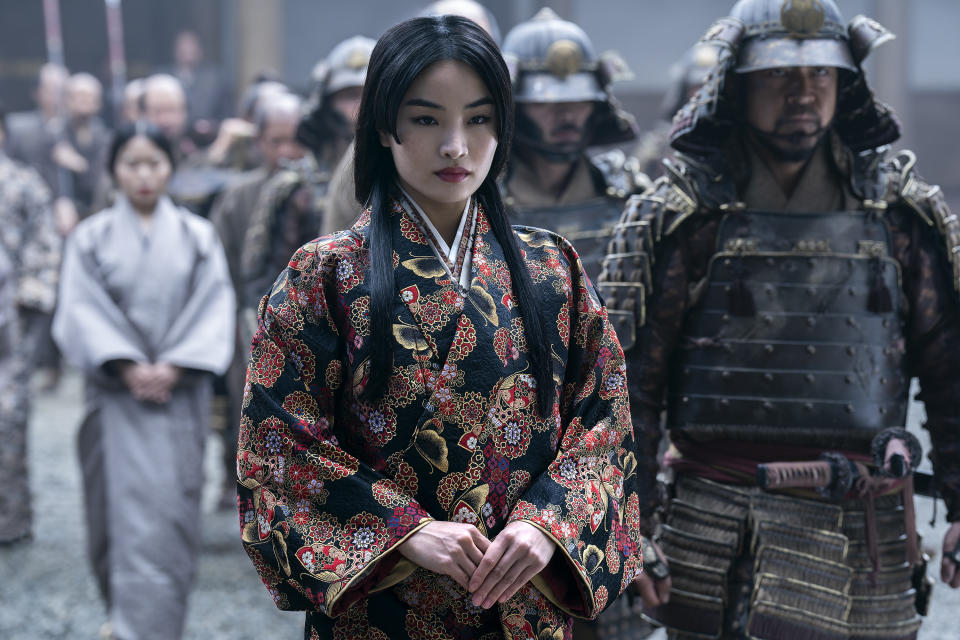
I want to ask you about specifics in the final two episodes. I know Mariko had to die, but how hard was it to kill the greatest character?
Marks: We had a lot of great characters, though.
Kondo: We also shot in order, so we had also seen our beloved Hiromatsu die, and it was difficult.
Marks: It was tough. I’ll tell you when it was tough. I called Rachel on the way home from, we were shooting that scene in Episode 4 when Mariko and Blackthorne are sitting in the garden, and it was really the first time we had seen the fireworks between Cosmo and Anna together on screen, because it was very early in the process. And I called Rachel, and I was tearing up from that scene because I said, “We’re going to have to kill her. We’re going to have to do this. This is going to end!” And it really started to hit me, the gravity of what was ahead.
In Episode 9, there are fake outs: You think she is going to commit seppuku in protest, she’s saved at the last minute — and then she blows up. Can you talk about the journey that you wanted to take the viewer on in that episode? Maybe she won’t die!
Kondo: Yeah, that is all in the book, too. We stayed pretty close to the book. And the way that it was propulsive in reading it, we were hoping to mimic that, I suppose.
Ya did! Blackthorne’s dream — or PTSD hallucination — in the finale of himself as an old man in an ornate bedroom, clearly in England. Please discuss.
Marks: That was an invention of the writers’ room of the show. We love this idea in a show about people trying to take control of their future to jump forward and initially make you believe that this is all just kind of an old man looking back on a life probably filled with regret — only to learn that it’s really the dream of a young man looking forward … with regret. Of a future that he then closed the door on by tossing that cross into the water.
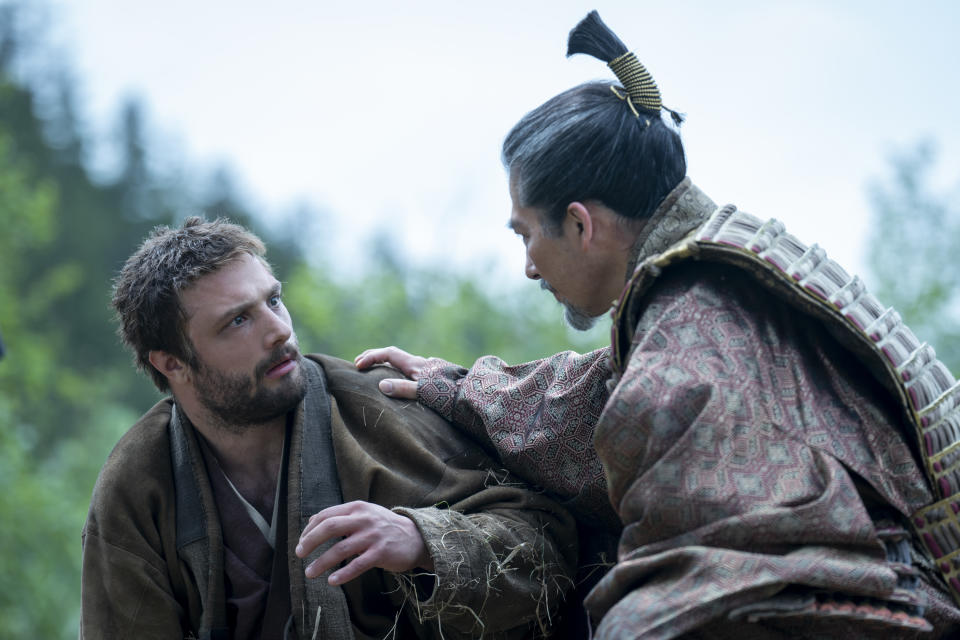
The big, epic meeting between Toranaga and Blackthorne in the finale — what went into the writing of that scene?
Kondo: I would say that was one of the toughest things to work toward, because we understood way back in the early days that we had tabled seppuku, we didn’t know if it would come back. We kind of waited as a room for a moment in which it would make complete sense. And that was a tough scene.
Marks: I give a lot of credit not just to the writers of that episode, to Maegan Houang and Emily Yoshida, but also I’m thinking about Cosmo himself in performing that scene. There are some moments of real magic that he found in the days leading up to that day, including something that when he proposed it, I could see it on his face immediately and that’s the face that he gives when he says it. But this idea of that he knew this one word from Episode 2 that had been given to him, and that word was “teki” — enemy.
He can’t really speak Japanese and he’s trying to communicate a real, deep emotional well to Toranaga — to tell him how much he hates himself in some way, and realizes the kind of man that he was when he came here. And he needs to kill that man, and the only way he can kill that man is to identify it. And he said, “I should say ‘teki.’” And then he did, and he tries it out, and then he tries it and he yells it! And all of that was Cosmo finding that in that place and really, I think, just a key, really moving callback.
Kondo: Most of the callbacks were found pretty late, right?
And similarly in the scene between Toranaga and Yabushige — can you talk about that final scene and what you wanted it to say about both characters?
Kondo: Everybody has a vision starting out, and mine personally was of two men in period clothing sitting on a grassy knoll saying nothing. And you just always have that image in your head, and you kind of write to that, and it ended up somewhat happening, very differently.
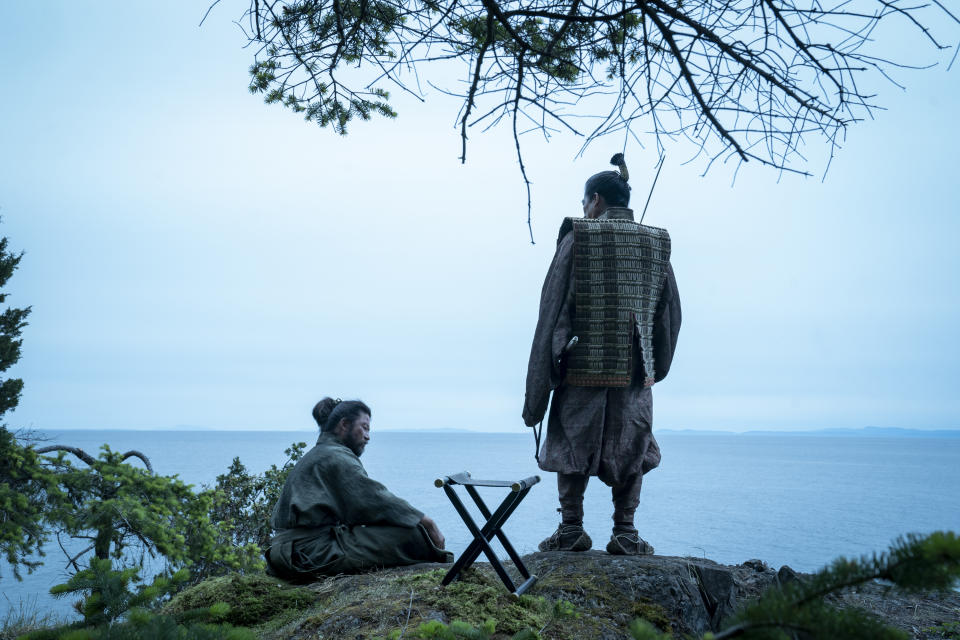
Marks: Again, I’ll come back to architecture. When you have such a good load-bearing post like this idea of that scene that it was all going to come down to — and from the writers’ room, we knew that the story was going to come to that. To these two men sitting on that hill discussing things that had already happened and things that may never happen. When we had that, then we could just lean everything else against it.
Was there ever a temptation to show the Battle of Sekigahara?
Marks: 1000%.
Really?
Marks: 1000%.
Kondo: Oh, I was going to say entirely no. Wow, OK.
Marks: Well, also from just conversations with the network. I think like any big decision, you have to look at the road you’re not taking. But believe me, when you’ve got all this battle armor that’s been built and horses and possible locations to shoot it on, it becomes a big temptation. And we talked about it — we even priced it out. And in the end, the more we began to speak about it, just how little it felt like our show.
At what point did you start thinking about a possible continuation of the show, especially since you had completed the book?
Marks: From the writers’ room of this show, we were always doing our fan fiction of what stories may be. And without getting specific, because a lot of those are just larks and jokes and fun things that we would always want to do: Like some fantastic alt-history where Blackthorne brings Yabushige back to London, and the two of them kind of go into this place. I mean, it would be wild.
A buddy comedy.
Marks: But like any factory after it struggles to just pump out one car, the next car gets a little easier and a little easier after that, and we began to sort of see the mechanism that the team had collectively put in place in terms of learning how to do this. The 900-page instruction manual that writer/producer, Caillin Puente put together for this show — all of these things spoke to a certain repeatability.
And when Gina Balian visited us in Vancouver one time when Michaela Clavell — James Clavell’s daughter, and an executive producer on our show — was up there, Rachel and I went to dinner with the two of them and presented the first kernels of, “We’re not sure we should do this, but if we did, here’s how we thought it might start.” And we gave them that scene, and we felt them go like this — and it felt really good!
Kondo: May I also add, at that dinner, there was also a little bit of tension, in the sense that someone might disagree a little bit about this character or that character. And that actually just felt intriguing, because if it was already sparking conversation and it was already kind of something we wanted to get into, then maybe there was something there.
Marks: There were a lot of questions that we felt were still unanswered in the story.
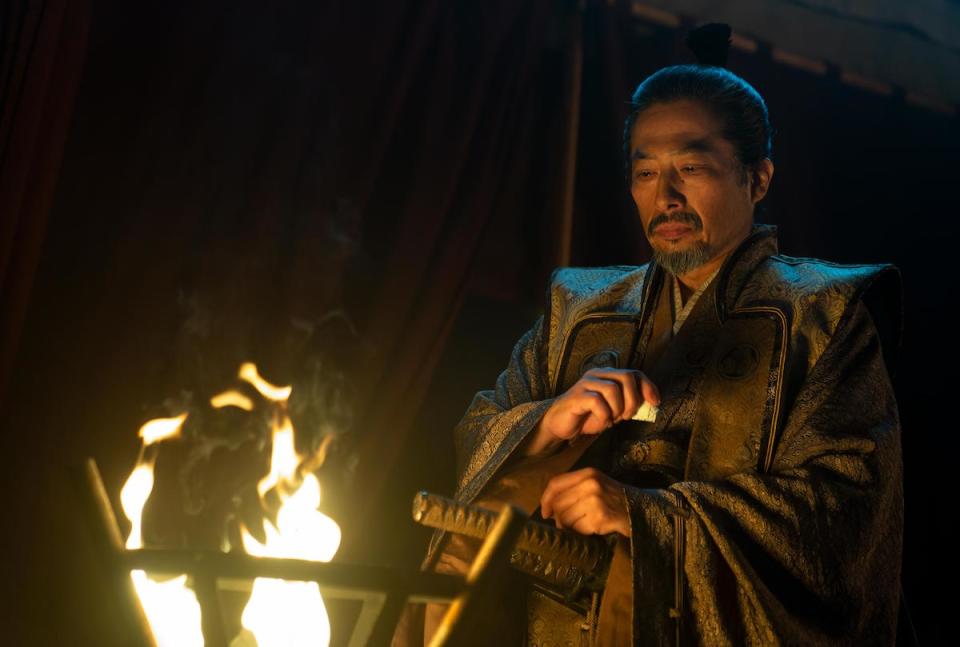
We haven’t seen him become the Shōgun!
Marks: Not the least of which is that the title character doesn’t become the title character. And yeah, that’s really when you have history on your side, what you don’t have on your side is this wonderful book moving forward. There are no roads where we’re going.
And I would be lying if I said we have the answers right now. We have been speaking with one of our historical advisors who we cherish, and talking just about, “Tell us a little more about William Adams here and Tokugawa Ieyasu there, and tell us about some new characters and some new things that are going on. And OK, yeah. Interesting.”
And really just building that together into a shape that started to feel like, “Oh, I think we have to do this. I think we really love this idea.” And I want to make that point especially clear, that what our document revealed to ourselves and to FX as collaborators is that we know how all of this ends in the final moment. And once we saw that moment, we said, “Oh, now we have to get to that. Now we have to do that.” And that felt much more honest in the way we were searching.
Is that one season? More than one season?
Marks: It’s more than one season.
Yes!
Marks: And we know how it gets to that place, and that place historically is based on a story that Frederik Cryns told us that came from history, that was like, “Oh, wow. Yeah, no, this is the natural end of this.” We think we have something that is exciting and surprising. We’re going to go into the room to build that and if we come out the other side and it’s no good, the assurance from FX and everyone is, we’re not going to make it.
Kondo: And it takes as much bravery and courage to put something out into the world as it does to table it, and to not put it out into the world. And I trust FX, Gina, Lindsay, Kate, John Landgraf — I trust them to kind of be the people who shape that process, and who tell us yay or nay.
What are you the most looking forward to about a second season? And what are you dreading?
Marks: Honestly, getting back into the writers’ room. The writers who put this show together were such a pleasure, and it was so long ago that we were all together. It was before the pandemic.
Kondo: We miss them!
Marks: And to get the band back together would be such a thrill, and it’s the place where I think as writers we’re happiest.
What I’m dreading is night shoots with the galoshes in the mud and the snow and the horses, and all that stuff coming back again. I still have nightmares.
Kondo: Well, at least you won’t be breastfeeding.
Marks: That’s true. Yeah, it was two babies and a TV show at the same time.
Kondo: Three babies!
This interview has been edited and condensed.
Best of Variety
Sign up for Variety’s Newsletter. For the latest news, follow us on Facebook, Twitter, and Instagram.

 Yahoo News
Yahoo News 
